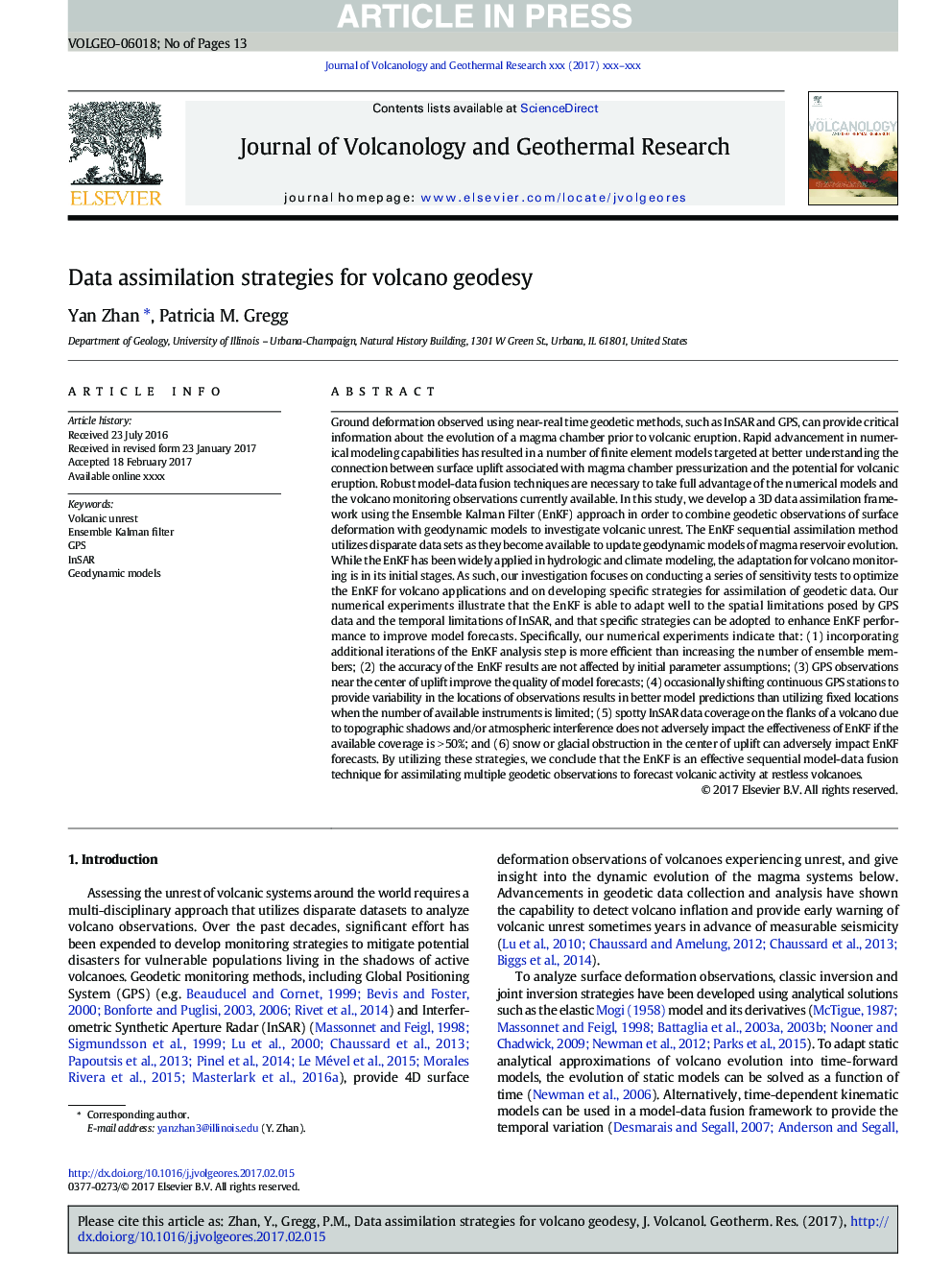| کد مقاله | کد نشریه | سال انتشار | مقاله انگلیسی | نسخه تمام متن |
|---|---|---|---|---|
| 5783715 | 1638279 | 2017 | 13 صفحه PDF | دانلود رایگان |
عنوان انگلیسی مقاله ISI
Data assimilation strategies for volcano geodesy
ترجمه فارسی عنوان
استراتژی های جمع آوری داده ها برای زمین شناسی آتشفشان
دانلود مقاله + سفارش ترجمه
دانلود مقاله ISI انگلیسی
رایگان برای ایرانیان
کلمات کلیدی
موضوعات مرتبط
مهندسی و علوم پایه
علوم زمین و سیارات
ژئوشیمی و پترولوژی
چکیده انگلیسی
Ground deformation observed using near-real time geodetic methods, such as InSAR and GPS, can provide critical information about the evolution of a magma chamber prior to volcanic eruption. Rapid advancement in numerical modeling capabilities has resulted in a number of finite element models targeted at better understanding the connection between surface uplift associated with magma chamber pressurization and the potential for volcanic eruption. Robust model-data fusion techniques are necessary to take full advantage of the numerical models and the volcano monitoring observations currently available. In this study, we develop a 3D data assimilation framework using the Ensemble Kalman Filter (EnKF) approach in order to combine geodetic observations of surface deformation with geodynamic models to investigate volcanic unrest. The EnKF sequential assimilation method utilizes disparate data sets as they become available to update geodynamic models of magma reservoir evolution. While the EnKF has been widely applied in hydrologic and climate modeling, the adaptation for volcano monitoring is in its initial stages. As such, our investigation focuses on conducting a series of sensitivity tests to optimize the EnKF for volcano applications and on developing specific strategies for assimilation of geodetic data. Our numerical experiments illustrate that the EnKF is able to adapt well to the spatial limitations posed by GPS data and the temporal limitations of InSAR, and that specific strategies can be adopted to enhance EnKF performance to improve model forecasts. Specifically, our numerical experiments indicate that: (1) incorporating additional iterations of the EnKF analysis step is more efficient than increasing the number of ensemble members; (2) the accuracy of the EnKF results are not affected by initial parameter assumptions; (3) GPS observations near the center of uplift improve the quality of model forecasts; (4) occasionally shifting continuous GPS stations to provide variability in the locations of observations results in better model predictions than utilizing fixed locations when the number of available instruments is limited; (5) spotty InSAR data coverage on the flanks of a volcano due to topographic shadows and/or atmospheric interference does not adversely impact the effectiveness of EnKF if the available coverage is >Â 50%; and (6) snow or glacial obstruction in the center of uplift can adversely impact EnKF forecasts. By utilizing these strategies, we conclude that the EnKF is an effective sequential model-data fusion technique for assimilating multiple geodetic observations to forecast volcanic activity at restless volcanoes.
ناشر
Database: Elsevier - ScienceDirect (ساینس دایرکت)
Journal: Journal of Volcanology and Geothermal Research - Volume 344, 15 September 2017, Pages 13-25
Journal: Journal of Volcanology and Geothermal Research - Volume 344, 15 September 2017, Pages 13-25
نویسندگان
Yan Zhan, Patricia M. Gregg,
